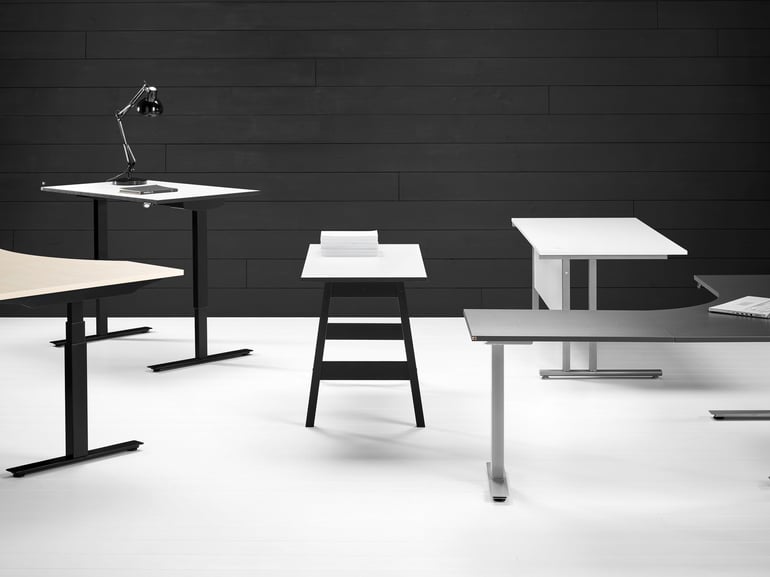How to choose the best office chair

The right office chair can be worth its weight in gold – for your body as well as your productivity. But, how do you decide which chair is most suitable for your needs? Ideally, it should follow your natural body movements to help you sit correctly, whether you sit down for one or eight hours a day. Here are some things to keep in mind when choosing your new office chair.
Recommended sitting time
The recommended sitting time has a big impact on the comfort of the office chair. The longer the recommended usage time, the greater the ergonomic function of the chair. However, bear in mind that, just because you can sit for that length of time, it doesn’t mean that you should!
4 hours – Basic office chairs for people who are often on the go and only spend short periods of time sitting down.
8 hours – Comfortable and ergonomic chairs for people who sit down for most of the working day. This is the most common type of chair.
12 hours – Executive chairs with optimum comfort for sitting many hours in a row.
24 hours – Chairs for around-the-clock use in call centres, control rooms, security companies, etc. where they need to be able to stand up to heavy use and offer adjustment possibilities for numerous users. 24 hour chairs can also be a good choice for people suffering from back problems as they offer extra support.
Common features
Most office chairs have different adjustment possibilities that can be set to provide the best comfort and support.
Adjustable seat height – A basic feature that should allow you to adjust the height of the chair so you can place your feet flat on the floor.
Adjustable back height – A feature that allows you to adjust the backrest to a position that suits the curvature of your lower back.
Adjustable seat depth – The ability to adjust the depth of the seat will help you get the right position for your height. For the best support, you should be able to sit with your bottom against the back of the chair and have a small gap between the front of the chair and the back of your knees.
Tiltable seat – A tilted seat opens up the hip angle and improves blood circulation in the legs.
Mechanisms
In addition to the common adjustment options, office chairs come with a choice of ergonomic mechanisms. The mechanism controls to what extent you will be able to customise the seat and back angle and whether this can be locked in position or left to move in harmony with your body.
Permanent contact back (PCB) – The backrest angle follows the movements of your upper body, i.e. stays in permanent contact with your back, or can be set in position.
Lock tilt or rocking mechanism – The backrest and the seat maintain the same angle ratio when moving. You can lock or unlock the tilt of the seat and back. The tilt resistance can be adjusted to your body weight.
Synchronous – The seat angle and back angle move together in a ratio of 1:2. The mechanism makes it easy to find a comfortable seating position and is particularly suitable for workplaces where several people use the same chair.
Multi synchronous – The seat and back angle move together in a ratio of 1:2 with the possibility to detach the seat and tilt it to any angle. This makes it easy to stretch out your body to improve the blood circulation to the legs and feet.
Asynchronous – The back angle and seat angle adjust independently and can either be fixed in the most comfortable position or left to follow your movements (free float). This allows you to find an ideal seating position that allows you to open up the hip angle, which improves blood circulation.
Active chairs are a smart alternative
Unlike most office chairs, an active chair keeps your body moving while you sit by encouraging the same natural shifts in posture that occur when standing or walking. Chairs such as balance stools and saddle chairs activate your back and core muscles and boost blood circulation. If you sit down for many hours a day, consider using an active chair for a few hours each day alongside our normal office chair.

